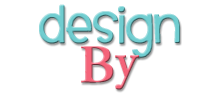

Archie comics archiecomics.com came to my school a few weeks ago!
It was totally awesome. Nancy Silberkleit the co-CEO of Archie Comics taught the students how comics were made. She also taught me a few interesting things about comics, she says,
 "The power of comics helps to encourage literacy and creativity in children. Children love to read comic books and graphic novels and often endeavor to mimic the format with their own creations. Comics teach children about storytelling and exploring their artistic abilities through illustration. It is a natural progression for children, serving as a bridge to reading from the picture books of their younger years, to stimulate literacy and promote creativity by offering budding readers the opportunity to interact with comic books and graphic novels. Not only does she see comics as another genre to our choices in literacy but a powerful tool to stimulate and build today’s children into strong creative thinkers that are prepared to approach complex situations.
"The power of comics helps to encourage literacy and creativity in children. Children love to read comic books and graphic novels and often endeavor to mimic the format with their own creations. Comics teach children about storytelling and exploring their artistic abilities through illustration. It is a natural progression for children, serving as a bridge to reading from the picture books of their younger years, to stimulate literacy and promote creativity by offering budding readers the opportunity to interact with comic books and graphic novels. Not only does she see comics as another genre to our choices in literacy but a powerful tool to stimulate and build today’s children into strong creative thinkers that are prepared to approach complex situations. Every child is capable of becoming a Superman or Superwomen and making a powerful contribution to society. To attain that, children need to be proficient in reading".
Then my school sponsored an Archie Books comic sale, (thanks to Mr. Barrese)
my class was wildly excited !!!!!
So much so they begged me to allow, reading comics and writing them during their independent workshop time.
I decided that this is definitely one of those "teachable moments"
and I should really pull some lessons from this newly found phenomenon that was taking over my class!
At first, I showed them many different types of comics and comic books.
I included historical, political, classics, funny, (yes from the newspaper) superheroes, even new comics like Sonic the Hedgehog.
We discussed what is similar and different among the types of comics.
- Is there dialogue? How is it presented?
- What are the characters doing? How is that shown?
- What is the shape of the comic frames? What does that represent?
- How is action shown?
- What happens from one frame to the next?
- Then Using the information from their discussions, I had the students come up with the different comic subgenres such for those noted above. The students should realize that within comics there are many genres and sometimes genre determines convention. So we started to write our own.
- I swear they took comic writing to the next level and incorporated comics into every piece of writing. (they were so excited, and interested)
- After I let them play around for a bit with this new style of writing, I knew I had to really teach them the genuine and correct information about comic writing.
- So I used Read Think Write.com and found out this terrific information and wonderful lesson below:/www.readwritethink.org/classroom-resources/lesson-plans/comics-classroom-introduction-genre-188.html?tab=4#tabs Here it is:
-
- Comics manipulate space on a page to guide the reader and affect the interpretation of the story.
- Page layout and design can represent different organizational models, especially for storytelling. For example, a page with many frames can represent an ongoing scene with a lot of action. Larger frames with a great deal of detail may be an artist's attempt to set a forthcoming scene. Even page divisions add a certain element of story organization.
- Comic "storytellers" are careful not to include too many disjointed scenes on one page; as with a written narrative, such a mixture would make for a confusing and jumbled story.
- Layout is important when combining images and text, and with comics, students can transfer knowledge of visual organization to verbal and written organizational models.
- The concept of exploring one idea fully before moving onto the next could be likened to the page-break concept in graphic art.
- With the new information they have, students should observe the conventions of page design and layout. Then they should analyze professional comics' use of the conventions.
- Then I found: Comic Creator ( OMG) it's a student interactive site and all of its tools help the students WRiTE a COMIC together. The students can use their knowledge of comic components and conventions to guide the teacher through a whole-class created comic.
- Finally, using the Comic Creator on their own, students experiment with the conventions of page design and layout in their own comics.
EXTENSIONS
- If you want to continue using comics in your classroom, visit the National Association of Comics Arts Educators for additional lesson plan, activities, and other resources.
- A million PoW, BaM, BooM's to Archie Comics, Read THink Write.com, and Comic Creator!








No comments:
Post a Comment